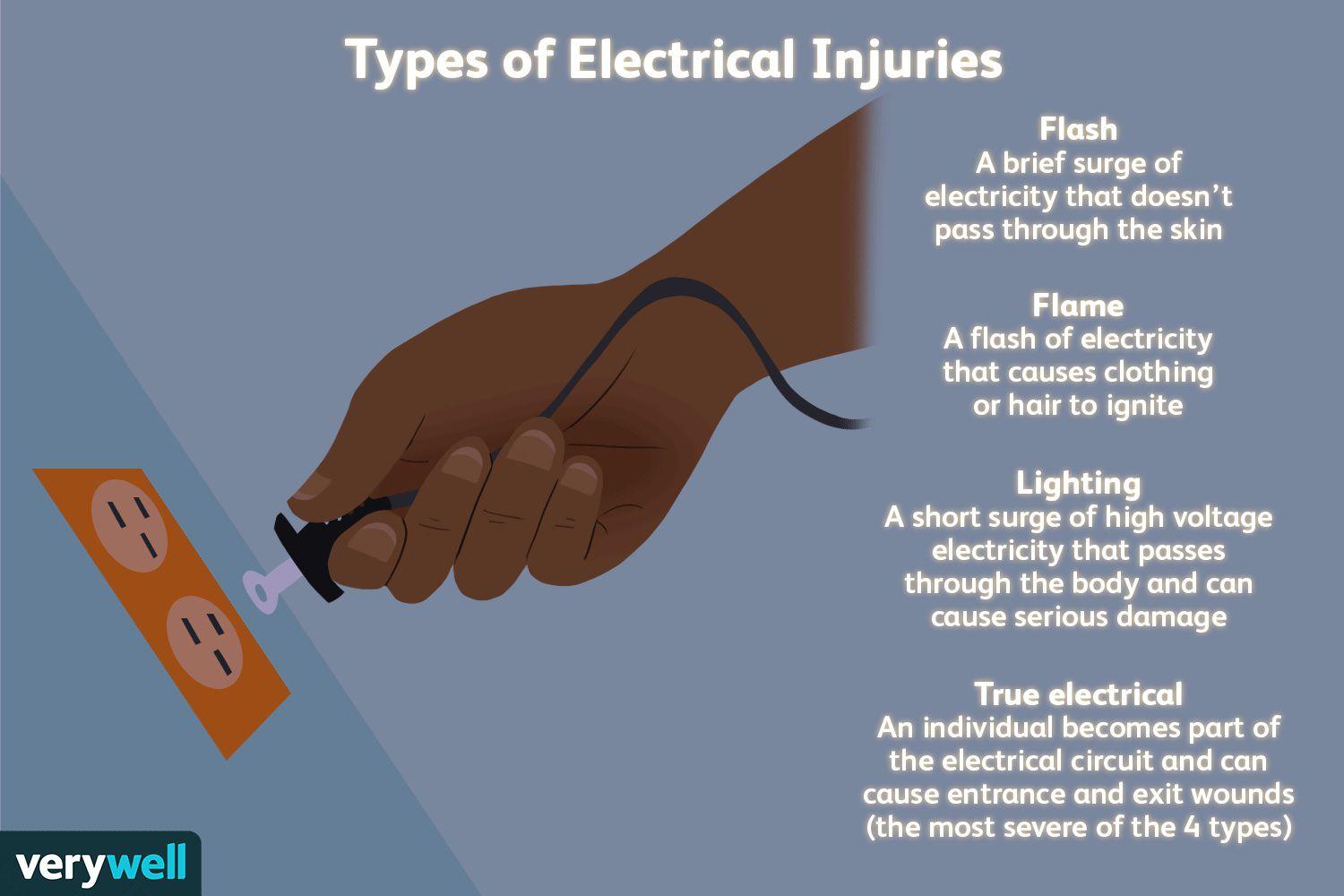A nurse is caring for a client with an electrical burn. The client states that since the wound on the skin is small, the burn must not be too bad. Which of the following is the best response by the nurse?
Electrical burns can have small amounts of skin damage, but more extensive damage beneath the skin.
Electrical burns commonly cause reddened/purplish skin without blistering.
Electrical burns typically are minor.
Electrical burns usually cause much more skin damage than what can be seen on your skin.
The Correct Answer is A
A. Electrical burns can have small amounts of skin damage, but more extensive damage beneath the skin.
This response is the best choice because it educates the client about the potential for deeper tissue damage associated with electrical burns. It acknowledges that while the burn on the skin may appear small, the damage underneath could be more extensive, affecting muscles, nerves, and blood vessels.
B. Electrical burns commonly cause reddened/purplish skin without blistering.
This statement is not the best response because it focuses solely on the appearance of the skin without addressing the potential for deeper tissue damage. While it is true that electrical burns can present with reddened or purplish skin without blistering, this response does not provide comprehensive information about the nature and severity of electrical burns.
C. Electrical burns typically are minor.
This response is incorrect because it downplays the seriousness of electrical burns. While some electrical burns may indeed be minor, others can cause significant tissue damage and complications. It's important for the nurse to educate the client about the range of severity that electrical burns can present.
D. Electrical burns usually cause much more skin damage than what can be seen on your skin.
This statement is partially accurate but does not provide as much information as choice A. While it acknowledges that electrical burns can cause more damage than what is visible on the skin's surface, it doesn't emphasize the potential for deeper tissue damage as effectively as choice A does.

Nursing Test Bank
Naxlex Comprehensive Predictor Exams
Related Questions
Correct Answer is A
Explanation
A. There is no redness, warmth, or drainage at the insertion site.
This assessment is crucial for evaluating the status of the abdominal drain site. The absence of redness, warmth, or drainage suggests that the insertion site is healing well without signs of infection or inflammation. It indicates that the drain is functioning properly and that there are no immediate complications related to the drain insertion. This assessment directly addresses the goals related to monitoring the drain site for signs of infection or dysfunction.
B. Drainage from the surgical site is 30 mL less than yesterday.
Monitoring the drainage output from the surgical site is important to assess for changes in drainage patterns. A decrease in drainage volume may indicate reduced fluid accumulation at the surgical site, potentially reflecting improved healing and decreased need for drainage. However, while this assessment is valuable, it is not as directly related to assessing the status of the drain itself or evaluating complications at the insertion site as option A.
C. The patient reports adequate pain control with medications.
Pain control is an essential aspect of postoperative care, but it is not specifically related to assessing the functionality or complications of the abdominal drain. While pain management is important for patient comfort and recovery, it does not directly address the goals related to monitoring the drain site for signs of infection, leakage, or other complications.
D. Urine is clear yellow, and urine output is greater than 40 mL/hr.
While monitoring urine output and characteristics is important for assessing renal function and hydration status, it is not directly related to assessing the abdominal drain or its complications. Clear yellow urine and adequate urine output are generally positive indicators but do not provide specific information about the functionality or status of the drain.
Correct Answer is ["E"]
Explanation
A. Increased pulse rate:
This is a common manifestation of fluid overload. Excess fluid volume can lead to an increase in cardiac output, causing the heart to pump faster and resulting in an increased pulse rate.
B. Decreased blood pressure:
Fluid overload typically leads to increased blood volume, which can initially cause an increase in blood pressure. However, as fluid overload progresses, it can lead to fluid redistribution, venous congestion, and decreased systemic vascular resistance, ultimately resulting in decreased blood pressure.
C. Skeletal muscle weakness:
Skeletal muscle weakness is not a direct manifestation of fluid overload. It is more commonly associated with electrolyte imbalances, such as hypokalemia or hypomagnesemia, which can occur as a consequence of fluid shifts but are not specific to fluid overload itself.
D. Warm and pink skin:
Warm and pink skin is not typically associated with fluid overload. Instead, it is more indicative of adequate tissue perfusion and oxygenation. In fluid overload, skin changes may include edema, cool and clammy skin due to venous congestion, or signs of skin breakdown in areas of pressure.
E. Distended neck veins:
Distended neck veins, specifically jugular venous distention (JVD), are commonly seen in patients with fluid overload, especially if there is right-sided heart failure or increased central venous pressure. JVD is a result of increased venous return to the heart due to fluid accumulation.
Whether you are a student looking to ace your exams or a practicing nurse seeking to enhance your expertise , our nursing education contents will empower you with the confidence and competence to make a difference in the lives of patients and become a respected leader in the healthcare field.
Visit Naxlex, invest in your future and unlock endless possibilities with our unparalleled nursing education contents today
Report Wrong Answer on the Current Question
Do you disagree with the answer? If yes, what is your expected answer? Explain.
Kindly be descriptive with the issue you are facing.
